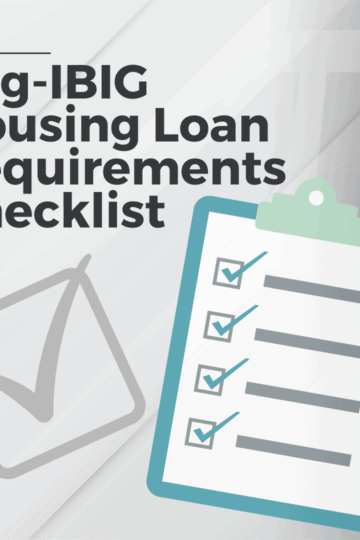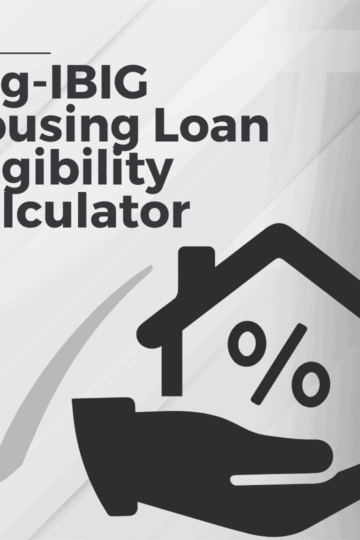Finding the right housing loan can be challenging, especially when you're trying to determine how much you can afford to borrow. Our Pag-IBIG Housing Loan Affordability Calculator helps you make informed decisions about your home financing options.
With this calculator, you can:
- Calculate your maximum loan amount based on your monthly income
- Determine the income required to qualify for your desired loan amount
- Evaluate property affordability by comparing your maximum loan to property values
This calculator uses the latest Pag-IBIG Fund interest rates and follows the standard 40% debt-to-income ratio that lenders typically use to assess loan applications. Enter your information in the calculator below to get personalized results for your situation.
Need more information? Check out our complete Pag-IBIG Housing Loan Guide for detailed eligibility requirements, application procedures, and tips for a successful loan application.
Pag-IBIG Housing Loan Affordability Calculator
Find out how much you can borrow based on your income and preferences
This calculator uses the official Pag-IBIG interest rates based on repricing periods:
- 1-year: 5.75% p.a.
- 3-year: 6.25% p.a.
- 5-year: 6.5% p.a.
- 10-year: 7.125% p.a.
- 15-year: 7.75% p.a.
- 20-year: 8.5% p.a.
- 25-year: 9.125% p.a.
- 30-year: 9.75% p.a.
Note: Special rates apply for Affordable Housing Program (3% p.a. for loans under ₱580,000)
Frequently Asked Questions
The maximum loan amount is calculated based on the 40% debt-to-income ratio rule used by Pag-IBIG Fund. This means your total monthly debt payments (including your housing loan) should not exceed 40% of your gross monthly income. The calculator takes your monthly income, subtracts any existing debt payments, and determines how much you can allocate toward a housing loan. It then calculates the maximum loan amount you can qualify for based on the selected interest rate and loan term.
Yes, this calculator uses the official Pag-IBIG Fund interest rates as of 2024. The rates vary according to the repricing period you select:
- 1-year: 5.75% p.a.
- 3-year: 6.25% p.a.
- 5-year: 6.5% p.a.
- 10-year: 7.125% p.a.
- 15-year: 7.75% p.a.
- 20-year: 8.5% p.a.
- 25-year: 9.125% p.a.
- 30-year: 9.75% p.a.
Note that these rates may change based on Pag-IBIG Fund policy updates. The Affordable Housing Program offers special rates (3% p.a.) for loans under ₱580,000.
A repricing period refers to how long your interest rate remains fixed before it can be adjusted by Pag-IBIG Fund. For example, with a 3-year repricing period, your interest rate will remain fixed for 3 years. After this period, Pag-IBIG may adjust the rate based on prevailing market conditions. Longer repricing periods typically have higher interest rates but offer more stability in monthly payments.
The down payment is the portion of the property's purchase price that you pay upfront. Pag-IBIG typically requires a minimum down payment of 20% of the property's value, though this can vary. A larger down payment means:
- You need to borrow less money
- Your monthly payments will be lower
- You may qualify for a more expensive property
- You'll pay less in interest over the life of the loan
The calculator factors in your selected down payment percentage when estimating the maximum property value you can afford.
The debt-to-income (DTI) ratio is a financial measure used by lenders to determine your ability to repay a loan. It compares your total monthly debt payments to your gross monthly income. Pag-IBIG Fund typically uses a maximum DTI ratio of 40%, meaning your total monthly debt payments (including the new housing loan) should not exceed 40% of your monthly income. A lower DTI ratio increases your chances of loan approval and may allow you to qualify for a larger loan amount.
Yes, self-employed individuals can use this calculator to estimate their loan affordability. However, you should enter your average monthly income after business expenses. Keep in mind that Pag-IBIG Fund may have additional documentation requirements for self-employed applicants, such as:
- Income tax returns for the past two years
- Financial statements
- Business registration documents
- Proof of regular income
Self-employed individuals may also need to demonstrate a stable income history to qualify for the maximum loan amount calculated.
No, this calculator does not factor in your credit score or credit history. It primarily focuses on your income, existing debt, and the loan terms to estimate affordability. In practice, Pag-IBIG Fund will evaluate your credit history and payment capacity as part of the loan application process. A poor credit history or existing delinquent loans may affect your eligibility or reduce the actual loan amount you can qualify for, even if the calculator shows a higher amount based on your income.
Yes, Pag-IBIG Fund allows for co-borrowers, including your spouse. To account for this in the calculator, you can:
- Add both incomes together and enter the total in the "Monthly Income" field
- Include all combined existing debt payments in the "Other Monthly Debt Payments" field
This will give you an estimate based on your combined household income. When applying for the actual loan, both you and your spouse would need to be Pag-IBIG members and submit the required documentation to qualify as co-borrowers.
The calculator offers three different calculation methods to help you approach housing loans from different angles:
- Income-Based: This tells you how much you can borrow based on your monthly income. It's useful when you're starting your home search and want to know your budget.
- Required Income: This tells you how much monthly income you need to qualify for a specific loan amount. It's helpful when you've found a property and want to know if you can afford it.
- Property Value: This compares what you can borrow based on a property's value against what your income qualifies you for. It helps identify if there's a gap between the property you want and what you can afford.
Using all three calculations gives you a comprehensive view of your housing loan options.
Yes, Pag-IBIG Fund has age requirements that this calculator doesn't factor in. Generally:
- You must be at least 18 years old to apply for a housing loan
- The loan term plus your age cannot exceed 70 years
For example, if you're 45 years old, the maximum loan term you could qualify for would be 25 years (reaching age 70). This may affect the maximum loan amount you can borrow, as shorter loan terms typically result in higher monthly payments.
The Pag-IBIG housing loan process typically takes 2-3 months from application to loan release, though timing can vary based on:
- Completeness of your submitted documents
- Property appraisal schedule and results
- Volume of applications being processed
- Additional requirements that may be requested
This calculator helps you determine how much you can afford before starting the application process, potentially making the approval process smoother by ensuring you apply for an appropriate loan amount.
No, this calculator provides estimates based on current interest rates and does not account for future inflation or interest rate changes. For loans with shorter repricing periods (like 1, 3, or 5 years), your interest rate and monthly payment may change after the fixed period ends.
When planning your long-term budget, you should consider:
- Potential interest rate increases after your repricing period
- How inflation might affect your income and expenses over time
- Building a financial buffer to handle payment increases
Choosing a longer repricing period provides more stability in monthly payments but typically comes with a higher initial interest rate.
Yes, you can use this calculator to estimate refinancing options, but with some adaptations:
- Use the "Required Income" calculator to see if you qualify for your desired refinance amount
- Include your current housing loan payment in "Other Monthly Debt Payments" only if you'll have other active loans besides the one you're refinancing
- Compare the new estimated monthly payment with your current payment to see potential savings
Keep in mind that Pag-IBIG has specific refinancing programs with their own terms and requirements that may differ from new housing loans. These include the Housing Loan Restructuring Program and the Affordable Housing Program. Check our guide for more details on refinancing options.
If the calculator shows you can't afford your desired property, you have several options:
- Increase your down payment: Saving for a larger down payment reduces the loan amount needed
- Add a co-borrower: Including a spouse or family member can increase borrowing capacity
- Reduce other debts: Paying off existing loans increases available income for housing
- Consider a longer loan term: This reduces monthly payments but increases total interest paid
- Look for more affordable properties: Consider different locations or smaller properties
- Improve your income: A higher or more stable income can qualify you for larger loans
- Check eligibility for the Affordable Housing Program: Pag-IBIG offers special rates for lower-cost housing
Use the calculator to explore how these different scenarios might affect your borrowing capacity.
No, the calculator provides an estimate based on standard lending formulas, not a final approval or guaranteed loan amount. Your actual approved loan amount may differ due to:
- Pag-IBIG's assessment of your payment capacity
- Property appraisal results (loans are typically limited to a percentage of the appraised value)
- Your Pag-IBIG membership status and contribution history
- Current Pag-IBIG housing loan policies and fund availability
- Your credit history and existing loan obligations
The calculator is most useful as a planning tool to set realistic expectations before you begin the application process.





Comments
No Comments